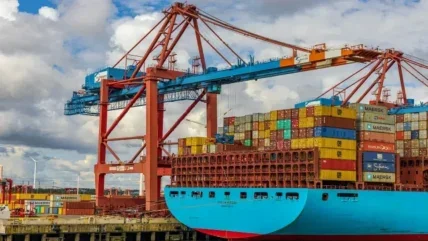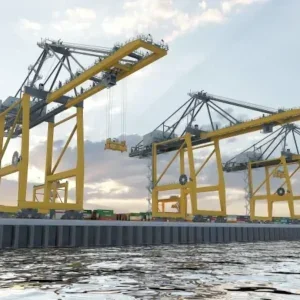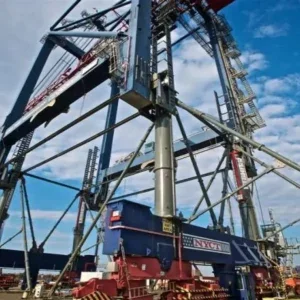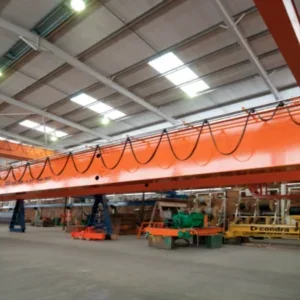
In an increasingly interconnected world, the overhead lifting equipment and material handling industry faces significant challenges related to cyber insecurity. The integration of advanced technologies such as the Internet of Things (IoT), automation, and data analytics has revolutionised the industry, enhancing efficiency and productivity. However, these advancements also expose companies to cyber threats that can disrupt operations, compromise sensitive data, and inflict financial losses. This article explores the impact of cyber insecurity on the industry, examines potential vulnerabilities, and provides strategies to enhance cybersecurity.
Understanding cyber insecurity
Defining cyber insecurity
Cyber insecurity refers to the state of being vulnerable to cyber-attacks, which can include hacking, data breaches, ransomware, and other malicious activities aimed at compromising digital systems. Cybercriminals target critical infrastructure, intellectual property, and personal data, causing widespread damage.
Types of cyber threats
Several types of cyber threats can affect the overhead lifting equipment and material handling industry:
- Ransomware: Malicious software that encrypts data and demands a ransom for its release.
- Phishing: Fraudulent attempts to obtain sensitive information by disguising as a trustworthy entity.
- Malware: Software designed to disrupt, damage, or gain unauthorised access to computer systems.
- Denial-of-Service (DoS): Attacks that overwhelm systems, causing them to crash or become unavailable.
- Advanced Persistent Threats (APTs): Long-term targeted attacks aiming to steal data or monitor systems.
Impact on the overhead lifting equipment and material handling industry
Operational disruptions
Cyber-attacks can lead to significant operational disruptions:
- Downtime: Attacks such as ransomware can cause extended downtime, halting production and disrupting supply chains.
- Equipment Malfunction: Cyber-attacks targeting control systems can cause equipment to malfunction, leading to safety hazards and operational inefficiencies.
Financial losses
The financial impact of cyber insecurity can be substantial:
- Ransom Payments: Companies may feel compelled to pay ransoms to regain access to their data, although this does not guarantee recovery.
- Lost Revenue: Operational disruptions result in lost production time and revenue.
- Recovery Costs: Expenses related to restoring systems, investigating breaches, and enhancing security measures can be significant.
Data compromise
Sensitive data is a prime target for cybercriminals:
- Intellectual Property Theft: Theft of proprietary designs, processes, and technologies can undermine competitive advantage.
- Customer Data Breaches: Compromised customer data can lead to legal repercussions and damage to reputation.
- Supply Chain Vulnerabilities: Breaches can expose vulnerabilities in the supply chain, affecting partners and suppliers.
Reputation damage
Reputation damage can have long-lasting effects:
- Loss of Trust: Customers and partners may lose trust in a company’s ability to safeguard their data and operations.
- Market Position: Reputation damage can erode market position, leading to lost business opportunities and decreased customer loyalty.
Potential vulnerabilities in the industry
Legacy systems
Many companies in the overhead lifting equipment and material handling industry still rely on legacy systems:
- Outdated Software: Older systems may lack the latest security features and updates, making them more vulnerable to attacks.
- Incompatibility: Integrating legacy systems with modern technologies can create security gaps.
IoT and connected devices
The proliferation of IoT and connected devices introduces new vulnerabilities:
- Device Security: Many IoT devices have limited security features, making them easy targets for cybercriminals.
- Network Exposure: Connected devices can serve as entry points for attacks on broader network infrastructure.
Remote access and work
The rise of remote access and work has expanded the attack surface:
- Unsecured Networks: Remote work often relies on unsecured home networks, increasing the risk of cyber-attacks.
- Access Controls: Weak access controls and authentication measures can lead to unauthorised access to critical systems.
Human factors
Human error remains a significant vulnerability:
- Phishing Attacks: Employees can inadvertently fall victim to phishing attacks, compromising sensitive information.
- Insufficient Training: Lack of cybersecurity training can leave employees unprepared to recognise and respond to threats.
Strategies to enhance cybersecurity
Implementing robust security measures
Investing in robust security measures is essential to protect against cyber threats:
- Firewalls and Intrusion Detection Systems: Deploy firewalls and intrusion detection systems to monitor and block malicious activities.
- Encryption: Encrypt sensitive data to protect it from unauthorised access.
- Multi-Factor Authentication: Implement multi-factor authentication to enhance access controls.
Regular security audits and assessments
Regular security audits and assessments can identify vulnerabilities and improve defences:
- Vulnerability Assessments: Conduct vulnerability assessments to identify and address security gaps.
- Penetration Testing: Perform penetration testing to simulate attacks and evaluate the effectiveness of security measures.
Employee training and awareness
Employee training is critical to fostering a culture of cybersecurity:
- Security Awareness Programmes: Implement security awareness programmes to educate employees about cyber threats and best practices.
- Phishing Simulations: Conduct phishing simulations to test and improve employees’ ability to recognise and respond to phishing attacks.
Secure supply chain management
Enhancing supply chain security can mitigate risks from third-party vendors and partners:
- Vendor Risk Management: Assess the cybersecurity practices of vendors and partners to ensure they meet security standards.
- Supply Chain Audits: Conduct regular supply chain audits to identify and address vulnerabilities.
Incident response planning
A well-prepared incident response plan is crucial for mitigating the impact of cyber-attacks:
- Incident Response Team: Establish a dedicated incident response team to manage and respond to cyber incidents.
- Response Protocols: Develop and regularly update response protocols to ensure a swift and effective response to cyber incidents.
- Communication Plans: Prepare communication plans to inform stakeholders and manage public relations in the event of a breach.
Adopting advanced technologies
Leveraging advanced technologies can enhance cybersecurity:
- Artificial Intelligence and Machine Learning: Utilise AI and machine learning to detect and respond to anomalies and potential threats.
- Blockchain Technology: Explore blockchain for secure and transparent supply chain management.
- Security Information and Event Management (SIEM): Implement SIEM systems to collect and analyse security data in real-time.
Case studies: industry responses to cyber insecurity
Case study 1: implementing advanced security measures
A leading crane manufacturer experienced a ransomware attack that disrupted operations and led to significant financial losses. In response, the company implemented advanced security measures, including multi-factor authentication, encryption, and AI-driven threat detection. These measures significantly improved the company’s cybersecurity posture, reducing the risk of future attacks.
Case study 2: enhancing employee training
A material handling firm faced repeated phishing attacks targeting its employees. The firm launched a comprehensive security awareness programme, including regular training sessions and phishing simulations. As a result, employees became more adept at recognising phishing attempts, leading to a substantial reduction in successful attacks.
Case study 3: securing the supply chain
A logistics provider specialising in material handling equipment recognised vulnerabilities in its supply chain security. The company implemented a vendor risk management programme and conducted regular supply chain audits. These efforts strengthened the security of its supply chain, reducing the risk of third-party breaches.
The future of cybersecurity in the industry
Embracing a proactive cybersecurity approach
Adopting a proactive cybersecurity approach is essential for future resilience:
- Continuous Monitoring: Implement continuous monitoring systems to detect and respond to threats in real-time.
- Threat Intelligence: Utilise threat intelligence to stay informed about emerging threats and vulnerabilities.
- Security by Design: Incorporate security considerations into the design and development of new products and systems.
Collaborating across the industry
Collaboration across the industry can enhance cybersecurity efforts:
- Information Sharing: Participate in industry forums and information-sharing initiatives to exchange knowledge and best practices.
- Joint Security Initiatives: Engage in joint security initiatives with industry partners to address common threats and vulnerabilities.
Regulatory compliance and standards
Staying compliant with evolving regulations and standards is crucial for maintaining cybersecurity:
- Regulatory Compliance: Ensure compliance with local and international cybersecurity regulations and standards.
- Industry Standards: Adhere to industry standards and best practices to maintain a robust security posture.
Conclusion
Cyber insecurity poses significant challenges to the overhead lifting equipment and material handling industry. By implementing robust security measures, conducting regular security audits, enhancing employee training, securing the supply chain, and adopting advanced technologies, companies can mitigate the impact of cyber threats. A proactive approach to cybersecurity, combined with industry collaboration and adherence to regulatory standards, will ensure the resilience and future success of the industry in an increasingly digital and interconnected world.






